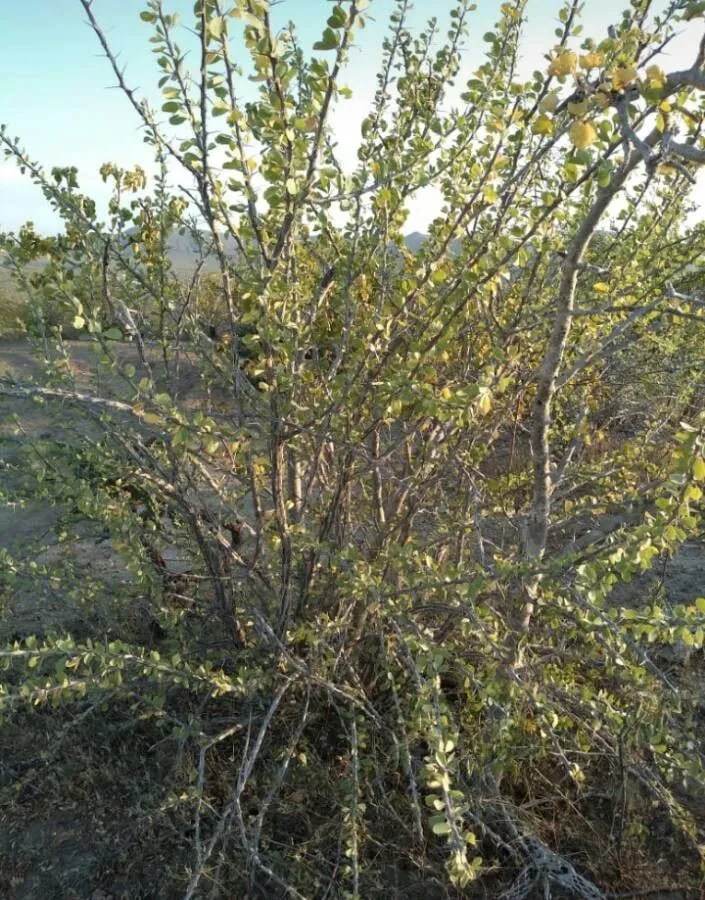
Author: Engelm.
Bibliography: F.A.Wislizenus, Mem. Tour N. Mexico: 98 (1848)
Year: 1848
Status: accepted
Rank: species
Genus: Fouquieria
Vegetable: False
Observations: S. California to SW. Texas and N. & W. Mexico
The Vine-cactus, scientifically known as Fouquieria splendens, is a remarkable plant native to the arid regions of Southern California, Southwestern Texas, and parts of Northern and Western Mexico. Described and documented by F.A. Wislizenus in his 1848 work titled “Memoir of Tour in Northern Mexico,” with the formal scientific classification given by Engelmann, this plant is a noteworthy member of the Fouquieriaceae family.
Fouquieria splendens, commonly referred to as Vine-cactus, stands out due to its adaptability to harsh desert environments. This plant typically thrives in sandy or rocky soils where water is scarce, and it has adapted various mechanisms to conserve moisture and reduce water loss. Its unique structure includes long, slender stems that can grow up to 6-10 feet in height, with a coarse, spiny texture that helps deter herbivores.
One of the most striking features of the Vine-cactus is its ability to produce bright, vibrant clusters of tubular flowers, usually in shades of red or orange, which bloom primarily in the spring. These flowers attract a variety of pollinators, including hummingbirds and bees, playing a crucial role in the local ecosystem by supporting pollination processes.
Despite its name, the Vine-cactus is not a true cactus. It belongs to a different family and does not share the same botanical characteristics as true cacti. Instead, it shares a resemblance due to its spiny exterior and ability to thrive in desert-like conditions. The plant’s green, succulent leaves appear primarily after rain and fall off during dry periods to minimize water loss, reverting it to a more bare, thorny appearance.
The Vine-cactus has aesthetic and ecological importance. In landscape design, it is prized for its striking appearance and minimal maintenance needs, making it a popular choice for xeriscaping—gardens designed to reduce the need for irrigation. Ecologically, it provides habitat and food for native wildlife, contributing to the biodiversity of its natural habitat.
In summary, the Vine-cactus (Fouquieria splendens) exemplifies nature’s resilience and beauty, flourishing in some of the toughest climates with a distinct charm that supports both its aesthetic value in horticulture and its ecological significance in arid ecosystems.
Swe: ocotillo
Eng: ocotillo, vine-cactus
En: Vine-cactus, Ocotillo, Candlewood, Coachwhip
Fi: Hehkuokotillo
Es: Ocotillo, Albarda
Sv: Ocotillo
Taken Oct 31, 2011 by EOL − Chris Cook (cc-by-nc)
Taken Aug 4, 2002 by EOL − Steven J. Baskauf (cc-by-nc-sa)
Taken Aug 4, 2002 by EOL − Steven J. Baskauf (cc-by-nc-sa)
Taken Aug 5, 2015 by EOL − acreman (cc-by-nc)
Taken Apr 6, 2016 by EOL − Cullen Hanks (cc-by-nc)
Taken Jan 28, 2022 by marissa crise (cc-by-sa)
Taken Oct 30, 2019 by Jay (cc-by-sa)
Taken Feb 6, 2021 by sarah simms (cc-by-sa)
Taken Jul 20, 2019 by González Mosqueda Rafael (cc-by-sa)
Taken Mar 6, 2022 by M Murphy (cc-by-sa)
Taken Feb 21, 2013 by EOL − BJ Stacey (cc-by-nc)
Taken Feb 19, 2013 by EOL − Greg Lasley (cc-by-nc)
Taken Feb 19, 2013 by EOL − Greg Lasley (cc-by-nc)
Taken Oct 25, 2014 by EOL − Sandino Guerrero (cc-by-nc)
Taken Sep 8, 2021 by Shehadi Ramiz (cc-by-sa)
© copyright of the Board of Trustees of the Royal Botanic Gardens, Kew.
© copyright of the Board of Trustees of the Royal Botanic Gardens, Kew.
© copyright of the Board of Trustees of the Royal Botanic Gardens, Kew.
Taken Apr 4, 2016 by EOL − Chris Cameron (cc-by-nc)
Taken Apr 12, 2014 by EOL − Jordan Golubov (cc-by-nc)
Taken Apr 15, 2014 by EOL − Kenneth Bader (cc-by-nc)
Taken May 1, 2021 by Rodríguez Lara Norma Elena (cc-by-sa)
Taken May 20, 2022 by Escudero 318 (cc-by-sa)
Taken Oct 9, 2021 by Terry Miller (cc-by-sa)
Taken Oct 30, 2019 by Jay (cc-by-sa)
Taken Jul 18, 2022 by Raylinn McConnell (cc-by-sa)
Taken Oct 24, 2019 by Carrera Valeria (cc-by-sa)
Taken Oct 11, 2021 by joe banks (cc-by-sa)
Growth form: Multiple Stem
Growth habit: Shrub
Growth rate: Rapid
Ph maximum: 8.5
Ph minimum: 7.0
Family: Myrtaceae Author: (F.Muell.) K.D.Hill & L.A.S.Johnson Bibliography: Telopea 6: 402 (1995) Year: 1995 Status:…
Family: Rubiaceae Author: Pierre ex A.Froehner Bibliography: Notizbl. Bot. Gart. Berlin-Dahlem 1: 237 (1897) Year:…
Family: Sapindaceae Author: Koidz. Bibliography: J. Coll. Sci. Imp. Univ. Tokyo 32(1): 38 (1911) Year:…
Family: Asteraceae Author: A.Gray Bibliography: Pacif. Railr. Rep.: 107 (1857) Year: 1857 Status: accepted Rank:…
Family: Fabaceae Author: Medik. Bibliography: Vorles. Churpfälz. Phys.-Ökon. Ges. 2: 398 (1787) Year: 1787 Status:…
Family: Aspleniaceae Author: (Cav.) Alston Bibliography: Bull. Misc. Inform. Kew 1932: 309 (1932) Year: 1932…